Audio
Newscast Concerning Micheal Wolff, Author of Fury and Fire, and Trump’s Twitter Account.
0 notes
Text
LGBTQ+ Individuals Often Found to Be the Target of Police Violence
Whilst you might see the police as protection, many LGBTQ+ people rightfully see them as enemies. One example of this is back on June 28, 1969, when the Stonewall Riots took place. The Stonewall Inn was an important place for LGBTQ+ individuals and drag queens to stay the night, including homeless LGBTQ+ teenagers and children that had no other place to go. It was also one of the only gay bars left that allowed dancing or drag queens, which enticed it to many patrons. On the morning of the 28th, police raided the bar, and arrested thirteen people due to apparent cross-dressing, which was outlawed at the time. Police abused people who they were arresting, and, fed up with their violence, people began to take action. Marsha P. Johnson, a transgender drag queen of color, threw the first brick and started the riots. From there, stones, bricks, pennies, and other projectiles were thrown at police in protest of their blatant discrimination. This event was groundbreaking in the LGBTQ+ rights movement, and continues to be an important part of LGBTQ+ history to this day.
Today, police continue to unfairly target LGBTQ+ people, especially those who are racial minorities. A 2013 survey found that out of all anti-LGBTQ+ violence, police were at fault 23% of the time when the victim did not personally know the offender. It was also found that 48% of LGBTQ+ violence survivors who had interacted with the police reported police misconduct. This misconduct includes unjustified arrests, use of excessive force, and entrapment. A 2011 study of transgender individuals found that 22% had been harassed by law enforcement, 6% had been assaulted by an officer, and 46% of individuals were uncomfortable to seek police assistance (Williams Institute). It’s not just adults that are affected, either, youths are being targeted as well. In 2009, a report found that 70% of LGBTQ+ youth involved in the juvenile justice system reported police mistreatment. Police mistakenly profiled many transgender teenagers as sex workers and even adults working in the field feel that LGBTQ+ youth are being targeted. As a broad community, a 2014 survey found that 21% of LGBTQ+ individuals had experienced hostility from police, and 14% reported verbal assault from members of the police force (Williams Institute).
It may be surprising to realize that around 90% of the people killed at the Pulse nightclub were Hispanic, and most were of Puerto Rican background. This is likely because of the demographic of people in the area and the fact that the club was hosting a Latin night on the night of the shooting, June 12, 2016. The Pulse nightclub was frequented mostly by LGBTQ+ people, and this was most definitely a hate crime against the community that also targeted racial minorities, and forty-nine people were killed. The justice system doesn’t even give the LGBTQ+ community the favor of de-criminalizing their lives, in fact, three states—Texas, Oklahoma, and Kansas—still explicitly outlaw consensual sex between individuals of the same sex (Slate). Its apparent that officers specifically target LGBTQ+ people in many situations, including an arrest for public indecency in October 2014 in Long Beach where Superior Court Judge Halim Dhanidina determined that officers were specially looking for gay and bisexual men to arrest (Long Beach Post). In an article published by Huffington Post, Daryl Deino recounts his experience being targeted by Long Beach police. He was at Rosie’s Dog Beach, an area where gay men often cruise and park. However, straight men are there as well, and they are not targeted by police like gay men are. Deino was walking his dog in the presence of a crowd of gay men and a few heterosexual couples.
“I saw bright lights flash towards the area, and two police cars pulled over. I, as well as the two heterosexual couples, knew we had nothing to do with these young men and walked away,” he recounts in the article. “However, several voices yelled and told me to get against the car with the other guys and put my hands on the roof. The police casually told the straight couples they could go.” He goes on to explain that he was eventually allowed to leave once the officers found out that he wasn’t with the group of men, however, he notes how obviously Long Beach police have been known to target LGBTQ+ individuals.
Transgender individuals, particularly transgender people of color, tend to be perhaps the largest group of people targeted by police violence. Transgender people of color are six times more likely to experience police violence than survivors and victims that are white and cisgender (NCAVP). It was also found that white transgender people were 3.7 times more likely to experience violence from police than cisgender survivors and victims (NCAVP). Transgender women are more likely to experience police violence than transgender men, however, the whole community is hugely targeted by law enforcement. Likely due to these statistics, it is found that one-fifth of transgender people have experienced police harassment, and 6% reported that they were the victim of bias-motivated assault by police. Overall, around half of transgender individuals are uncomfortable seeking police assistance (NCTE).
With all of these apparent facts, it becomes evident that something must be done about police violence against LGBTQ+ individuals. This is when it is important to be an “ally”, step up from just marching in our pride parades and being overly enthusiastic when one of your friends comes out. Help us, help the community, and speak up when we can’t for fear of violence that will almost certainly be perpetuated against us. We will continue to fight for our rights, and to fight for equality, and it is your job to step up and fight beside us.
Sources:
Deino, Daryl. “Police Discrimination In LGBT Community: Long Beach Is Recent Ground Zero.” The Huffington Post, TheHuffingtonPost.com, 27 Mar. 2017, www.huffingtonpost.com/entry/police-discrimination-in-lgbt-community-long-beach_us_58cf1a17e4b0537abd95724c.
History.com Staff. “Stonewall Riots.” History.com, A&E Television Networks, 2017, www.history.com/topics/the-stonewall-riots.
Mallory, Christy, et al. “Discrimination and Harassment by Law Enforcement Officers in the LGBT Community.” The Willams Institute, Mar. 2015, pp. 1–28., http://williamsinstitute.law.ucla.edu/wp-content/uploads/LGBT-Discrimination-and-Harassment-in-Law-Enforcement-March-2015.pdf
NCTE. “CHAPTER 4. Ending Violence.” Amnesties, Accountability, and Human Rights, pp. 1–4., http://www.transequality.org/sites/default/files/docs/resources/NCTE%20Federal%20Blueprint%20Chapter%206%20Police%20and%20Ending%20Violence.pdf
NCVAP. “Hate Violence.” AVP, pp. 1–1.,
avp.org/wp-content/uploads/2017/04/ncavp_transhvfactsheet.pdf.
Rivera, Stephanie. “Class Action Lawsuit Planned After Dismissal in Long Beach Discriminatory Gay Sting Case.” Long Beach Post, 6 June 2016,
https://lbpost.com/news/2000008948-long-beach-city-prosecutor-says-he-won-t-appeal-ruling-that-claimed-discriminatory-practices-in-police-stings
Stern, Mark Joseph. “You Can Still Be Arrested for Being Gay in Red-State America.” Slate Magazine, Slate Magazine, 5 Aug. 2013, www.slate.com/blogs/xx_factor/2013/08/05/gay_people_are_still_being_arrested_for_having_consensual_sex_in_some_red.html.
Thrasher, Steven W. “Latino Advocates Mourn Pulse Shooting Victims: '90% Were Hispanic'.” The Guardian, Guardian News and Media, 14 June 2016,
www.theguardian.com/us-news/2016/jun/14/latino-hispanic-orlando-shooting-victims.
0 notes
Text
Elements of Effective Newscasts
A broadcast news story is effective when it is accurate and engaging to viewers. The newscaster’s voice can become dull very quickly if they speak in a monotone and don’t put emphasis on their words. I noticed that many weather reporters make jokes as they are speaking about the weather in order to grasp more of the viewer’s attention. Some don’t, but they make commentary about how the weather may affect their weekend or everyone else’s week or weekend. Personally, I find it easier to pay attention if they don’t make jokes or comments and just quickly go through the upcoming weather, as personally, I don’t find the topic very interesting.
In hard news stories, many newscasters make cases seem more dramatic than they are to grab viewer attention. They do this through the use of descriptive words, action verbs, and negative phrases to describe the incident. If someone died in the incident, their voice will often sink into a lower tone and sound more negative and sad. This can help to invoke negative emotions in the viewer. They also tend to do this in situations where fires or other natural disasters are involved.
Witnesses, victims, and friends and family of victims are often featured on news stories as well. These often make stories more interesting and intriguing. They can also be used to add another perspective with other facts that weren’t necessarily presented in the news story. It can be detrimental as well, though, because if a victim or victim’s friend is still in shock over the event, it can be unethical to film their grief or shock for content to put into the news story. Personally, I think that witnesses can be valuable input to news stories, however, I think that if it is detrimental to their mental health then it is not okay.
I found that the newscasts that were most interesting to me focused on current events and not weather or sports. I find sports reporting repetitive and boring for the most part, but the ones that I did watch enlightened me as to what makes a good or bad report of a sports event. If a sports reporter makes jokes or small comments that are unrelated to the game, I found that I was more interested in the story. Ones that only focused on a play-by-play of the game were less entertaining.
Overall, broadcast news stories become effective when they attract and engage viewers and listeners. If a story is intriguing, has accurate facts, and has a good amount of information, it is likely that people will listen to it. In visual broadcasts, graphics and videos related to the story enhance the report and give the viewer something to look at while they listen to the report. These graphics can also provide additional information that the report might not have had otherwise.
0 notes
Photo

1 note
·
View note
Photo



Bonner County Rodeo at the Sandpoint Fairgrounds. August 4th and 5th, 2017.
1 note
·
View note
Text
Small Town Advertising Has its Downsides, but Can Be Great for Business
Advertising in small towns is an extremely powerful business tactic because a small population is more likely to see a product advertised on bulletins at local stores than on television. Barbara Sawyer, founder and leader of Willow’s Reading Services, is no newcomer to the world of advertising in a small town.
Barbara started Willow’s to help support children and teenagers who find themselves behind in reading ability in school. She personalizes programs to fit each child in order to make sure that they have the highest rate of success. She started out small and has expanded her advertising efforts substantially since the birth of the program in 2016.
“I began advertising with flyers and things like that, just simple things to get people interested in the program. It was my baby, in a way, because I have worked with others in a school setting for so long that it was refreshing to have a project that I have complete control over.”
The program was slow to take off, but once people began to notice the advertising, Sawyer got phone calls and texts, and many of them referenced her fliers.
“At first, I didn’t know if my advertising was working, but then I made a Facebook page as well and people reached out to me on there as well as over the phone. It was mostly for older kids, which was the intent, and I was sort of surprised that people trusted the program when they had tried so many other things that hadn’t worked.”
After her initial advertising, Sawyer decided that she needed to step up her advertising game to reach more people that could benefit from her program.
“After making a page on Facebook, I started to reach out to families at the schools that my son went to throughout elementary to see if there was actually a larger audience for my program. After I found out that more people were interested, I started to advertise through word of mouth, and the people that I talked to talked to other people about it, so it sort of spread from there.”
In addition, she puts advertisements in the paper as well.
“I began with smaller ads,” she said, “Just the small ones in the Nickel’s Worth that didn’t cost that much. I think it was a good way to start with the newspaper, because that way, I was able to afford larger ads when I got to that point.”
Because the company is her own, Sawyer acts as the advertising professional for the business. She didn’t go to school specifically for it, but she did receive her Master’s in English.
“As far as advice for people wanting to get into advertising, I would say to be more prepared than I was. Take some classes in college in communications and journalism, that type of thing, and keep an eye on local businesses and look at how they advertise and how that works for them. Talk to people that are experienced, of course, it will be harder in a bigger city than in small towns like this.”
She goes on to expand on the differences.
“I used to live in L.A., which is a large city where advertising virtually has to be done as a big story in the newspaper or on TV. In small town, there are billboards and small newspapers that everyone reads, in cities like L.A. people are much more focused on their lives and will normally only notice advertising if it is right in their face.”
When asked about her code of ethics, Sawyer thought for a while before responding.
“I don’t really have one, no, just common politeness guidelines I guess.”
Sawyer said that she’s glad to advertise in a small town as opposed to a big city.
“It really helps me to get my business out there,” she said, smiling. “It’s nice to be able to help kids and parents who think that there may be no more options for them.”
0 notes
Photo
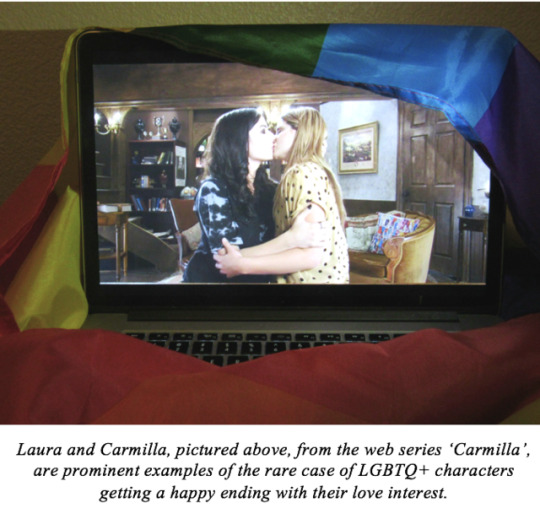
Problems Are Numerous With How LGBTQ+ Characters Are Treated in Media
A character appears on Brooke’s television screen, not a revelation, as it is nearing the end of the movie and the character has already appeared several times. The character is bisexual, and Brooke is a lesbian, so she finds herself identifying with this strong female character. The character utters some tense, last-minute apologies, kisses her stunned girlfriend, and leaps into battle. There is a barrage of gunfire, and the character falls backward in a dramatic display of cinematic slow motion. Yet again, Brooke watches herself die on-screen.
There seems to be a phenomenon in the media, tracing back to the first appearance of a gay character on television in 1971 when Philip Carey played a character named Steve on a TV show by the name of ‘All in the Family’. He appeared, unsurprisingly, for exactly one episode. This particular phenomenon has to do with the way that LGBTQ+ characters are treated in the media.
“There’s just not enough [LGBTQ+ characters] and there could be more,” Brooke said, “It’s nice to see representation.”
Brooke isn’t the only one that has noticed this problem. Many people have noticed and are speaking out. Jade, 16 and bisexual, said, “I think there isn't enough representation overall but that diversity within LGBT+ media could also greatly improve. Trans characters, pan, bi, and other gender variant characters are very rare. Gay and lesbian representation could definitely be better, but more diverse representation is extremely important as well.”
As with any controversial topic, not everyone agrees.
“I have literally never have seen [the concept of “bury your gays”] except from media in Islamic-majority and to say it happens in the western world to a large degree with renowned acceptance is stupid and not factually founded,” Ashley, 18 and bisexual, said.
“I believe LGBTQ+ characters in the media are nowadays treated with higher favor than those who are not LGBTQ+, solely because they were oppressed in the world for so long that now, in most western countries, LGBTQ+ people have similar if not the same rights as non-LGBTQ+ people, they should be "coddled" to prevent a resurgence of unequal rights. I feel a better way to represent the LGBTQ+ community in the media is to level the playing field, and make it so that a plot revolving around an LGBTQ+ character isn't solely about their LGBTQ+ status and is more about the actual person themself. Focusing solely on gender or sexual identity and basing an entire person's life on that is boring and not representative of real LGBTQ persons.”
The concept of “bury your gays”, which Ashley referred to, originally was known as “dead lesbian syndrome” and referred to characters such as Tara McClay from Buffy the Vampire Slayer. Around 2007, it morphed into the term “bury your gays” and represents the trope that occurs when LGBTQ+ characters die in popular media or meet some other drastic and unhappy end. In a survey that I conducted among both individuals in the LGBTQ+ community and those who are not part of it, 31.3% of respondents said that the trope is important, but overdone, 50% felt that it is harmful for young members of the LGBTQ+ community to have to watch themselves die on screen over and over again, and 12.5% felt that it is important so that people can see the repercussions of homophobia, bullying, and hate crimes directed at the LGBTQ+ community. 10%, like Ashley, held divergent opinions.
Ashley isn’t the only one to disagree with the concept. Ryan, 14, spoke about how he perceives that LGBTQ+ characters are treated in the media.
“[They are] white, well off, and haven’t experienced a day of real homophobia in their lives, or if they did, can cry in their silk sheets. The LGBTQA movement started with homeless POC kids and I’m more interested in seeing Martha’s story on YouTube and, lately, on Netflix. Our life isn’t lavish and the comfort we receive is generally with a community and not a single protagonist.”
He went on to elaborate, “The only queer characters I’ve seen have been in documentaries, and I aspire to be like Martha P Johnson and the members of the pink panther patrol. Also, Doughnut from Red Versus Blue when he was going through his toxic masculinity phase resonated with me.”
However, the validity of the mistreatment of LGBTQ+ characters in the media does seem to be maintained by many who consume media.
“The LGBTQ+ community is usually used in media to make jokes. I've watched many movies where men are put in dresses just to make it a joke, which is detrimental to society's acceptance of trans people and cross dressers being who they are in public. We need more media produced where the community is treated as a common occurrence, and show that there aren't just two sides of everything, male and female, for example, but a spectrum that varies widely,” Alex, 16 and transgender, said.
“Much of the time the character's character is focused mainly on being a part of the community. Media almost makes it seem like being part of the community is all that we are. On the other end of the spectrum, with other characters I've seen, the producers say "oh yeah, this character is bisexual" but that part of the character is not even hinted at in the media. Portraying LGBTQ+ characters in either of these ways just makes it seem like the producers are forcing it into the media, and gives the community an almost fake, over-focused or super-hidden reputation.”
In the same survey mentioned earlier, 81.3% of participants expressed that they believed that when compared to heterosexual, cisgender characters, LGBTQ+ characters consistently get worse endings in media. 10% were undecided, and the remaining 10% expressed detailed opinions.
“The only reason they might get that ending is because it is a very common ending in real life and people who make media like that are trying to represent the real gay experience to the rest of the world,” Ashley said, “But overall, they are only at a slightly worse "lack of happy endings" situation than straight and cis people.”
As with all media, LGBTQ+ representation in media effects many young people in the community. Young people tend to look for people who represent them to look up to in media, and Jade is no exception.
“Being part of the LGBTQ+ community and seeing LGBTQ+ characters in the media is interesting. My younger sister watches a cartoon and there’s gay dads and a bi sister, and they are shown like normal people, which I think is great since the LGBTQ+ community should be treated equally. However, I dislike how some LGBTQ+ characters are added into shows or movies only to get killed off later or just disappear, and then the straight people are still there. I hope representation of the LGBTQ+ community in the media gets better in the future.”
Alex agrees.
“When I see people in media who I can relate to, whether it's sexuality or gender identity, I feel really warm and light inside, like my heart lights up with hope. It makes me extremely happy to see LGBT+ representation in media because it makes me feel like I'm not the only one, and reminds me that there are lots of people who are LGBT, and that it's possible to succeed in life regardless of not being the 'norm'. It shows that there are enough LGBT people that it influences the media. It gives me a feeling of hope and connectivity.”
Barbara, 65, has witnessed many of the changes in media over the years, including the inclusion of LGBTQ+ characters into popular media.
“In much of the mainstream media I believe LGBTQ characters are stereotyped. I think this will get better as more people outside the LGBTQ community become more tolerant and less judgmental of human diversity,” she said, remaining hopefully optimistic.
Another issue that runs rampant in the media world is generalizing LGBTQ+ characters until they only exist to be solely LGBTQ+.
“Much of the time the character's character is focused mainly on being a part of the community. Media almost makes it seem like being part of the community is all that we are.” Ryan, 21 and gay, said.
“On the other end of the spectrum, with other characters I've seen, the producers say "Oh yeah, this character is bisexual", but that part of the character is not even hinted at in the media. Portraying LGBTQ+ characters in either of these ways just makes it seem like the producers are forcing it into the media, and gives the community an almost fake, over-focused or super-hidden reputation.”
“It’s encouraging to see characters treated as any other character; valued by their personal attributes and characteristics and not by their gender or sexual orientation,” Jill, 19 and nonbinary, said.
“As a minority, they are the “other”. They should be treated as any other gender and binary conforming character. Their sexuality or gender should not be an overarching characteristic.”
Of course, even within the community people have drastically different views on the issues that it has.
“[Seeing LGBTQ+ characters in media] makes me ashamed to be lumped into a community as shallow and pedantic as the LGBTQ+ community,” Ashley said, “I find most people in the community have to fit into a certain stereotype, such as being liberal, anti-gun, feminist, etc., and claiming that you differ from these ideals makes you a "traitor" of sorts. Being a conservative bisexual, I get lots of backlash from the community and have been told I don't belong to it because I don't hold the same political and personal views as many of the other members of the community. The media makes it seem that the LGBTQ+ community is about acceptance, but they only accept you if you hold the same moral virtues as they do. It's wrong and puts the LGBTQ+ community in an overly positive light that they don't deserve due to the rampant toxicity that the community has.”
It’s evident that how LGBTQ+ characters are represented in media affects people in the community, in both positive and negative ways.
“I try to stick to media that portrays LGBT characters in a positive light, but every once in a while I'll see something homophobic or transphobic and it's like I just stop functioning for a moment. It really hurts when that happens. Seeing LGBT characters just casually living their lives in the media brings me so much joy. I spent much of my life thinking that about marrying a man as my only option, so just seeing these LGBT characters living their lives gives me hope that someday I might have a happy future too,” Emily, 19 and a lesbian, contributed.
Stereotyping is another issue that has been briefly touched upon, but is a larger issue than sometimes thought.
“LGBTQ+ characters are often presented as either a background character or an accessory to the main heterosexual, cisgender cast. They get stereotyped, for example, flamboyant gay friend, and aren’t expanded, other types that merely exist in order to build up jokes or show how much they deviate from the norm. Cisgender, heterosexual screen-writers should get secure information on what’s it like to be LGBTQ+ and to not treat our sexuality or gender-identity as something not understandable and disgusting,” contributed Brooke.
“When I was younger, LGBTQ+ characters in the media helped me understand what I felt was felt by other people. I would watch a show, and when there was a gay character I was excited to see myself represented. Often though, that character would have a bad ending and I would feel sad seeing an image of myself dead or washed up or heartbroken. I want to find and create better representation for my community so other LGBTQ youths don’t have to feel the same way I did when I sought out characters like me in media.”
In the after-mentioned survey, 68.8% of participants stated that it is “fairly difficult” or “extremely difficult” to find movies or other media where LGBTQ+ main characters don’t end up dead or otherwise incapacitated. Only 6.3% of participates stated that that type of media is easy to find.
In contrast, 75% of participates think that it is “extremely difficult” or “fairly difficult” to find media where LGBTQ+ main characters end up with their love interest in a happy relationship.
Out of all of the main types of media, digital art seems to treat LGBTQ+ characters the most similarly to heterosexual, cisgender characters. In fact, 62.5% of survey respondents agreed with that statement.
As evidenced by the statements made by mainly LGBTQ+ youth in this article, LGBTQ+ characters in media often meet drastic ends while heterosexual, cisgender characters get their happily ever after. It’s time for producers, screenwriters, authors, animators, and others in the media business to step up- for current LGBTQ+ community members and also future youth who will turn to the media in an attempt to see themselves in their favorite characters. There is certainly a time and place to alert the public to the repercussions of hate and homophobia, however, LGBTQ+ community members are already directly exposed to that hate on a daily basis. It’s extremely difficult for them to turn to media for comfort and see these horrible occurrences happening to not just them, but to the characters that they admire as well.
As Emily puts it, “I want canon queer characters that don’t die and just generally are happy.”
*Please note that some names have been changed to protect privacy
0 notes
Photo

Brian Slade
Brian Slade, legendary glam rock star that had adopted the persona of ‘Maxwell Demon’, has died at the age of twenty-seven. He was murdered at the July 16th, 1976 show of his Maxwell Demon tour in London, where he has resided since he was born in 1949. It is reported that a gunman snuck into the venue and pulled the trigger, causing Brian to fly backwards in a cascade of glitter, feathers, and blood. As of yet, no suspects have been named.
Brian was born Thomas Brian Slade on January 8th, 1949 in London to his parents, James and Miranda Slade. He was an only child, and was often compared to what his parents imagined Oscar Wilde would have been like as a child. From early on, he was enamored by theatre and performance and would dress up in fancy clothes and colorful makeup and perform songs in the living room. Some of this predisposition to performing is thought to have come from his aunt, with whom he spent a whole summer with learning about the intricacies of theatre.
At age twenty-three, Brian married Mandy Slade in a low-budget ceremony in London that was nevertheless decked out in glitter and boasting Brian’s backing band, Venus in Furs. They maintained an open relationship even after their marriage, and Brian was in a highly-publicized relationship with American pop singer Curt Wild at the time of his death. He attended a university in his hometown for a semester before dropping out because of boredom.
Throughout his career, Brian became a sensation and scored three platinum records, his most famous detailing the life of a space alien-turned glam rocker. He is often cited as leading the sexual revolution of 1970s glam rock, as he preached bisexuality and donned clothing seen as traditionally feminine, such as glitter makeup, platform heels, and various frocks and dresses. His sense of humor was often morbid, and he often joked about dying as a result of assassination.
Brian is survived by his wife, Mandy Slade; boyfriend, Curt Wild; father, James Slade; mother Miranda Slade; and manager, Jerry Devine. All reside in London, although Curt and Mandy were born in America.
The service will be held at the family’s home; however, more information can be obtained by calling Brian’s management. His ashes will be scattered over The Serpentine Lake, as he often enjoyed spending time in thought there to escape his high-intensity lifestyle.
Memorial donations can be made to various London newspaper publishers, for the express purposes of “hiring better reporters”. Brian commented this as his intention to Mandy after encountering what he described as a “particularly shabby journalist” by the name of Arthur. Alternatively, Brian’s parents request that donations be made to help to cover funeral costs. They would like to thank Jerry Devine for leading Brian throughout his career and helping him to achieve the success that he knew at the time of his death.
Three words that sum up Brian, according to Curt Wild, include “Overwhelming”, “Clever”, and “Painfully unique.”
“I took some artistic liberties with that last one,” Wild said, “Brian was tops, truly someone who is indisputably a legend. I think he got what he wanted in the end, and if not, I have full confidence that he will come back and haunt the lot of us until he does.”
“The truth is rarely pure and never simple.” –Oscar Wilde
This obituary was posted only two days before the Slade shooting was declared to be a hoax. According to Slade’s manager, Jerry Devine, the whole ordeal was nothing but a publicity stunt.
8 notes
·
View notes
Photo



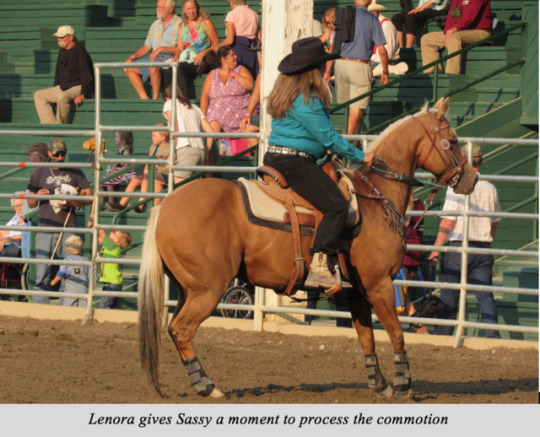
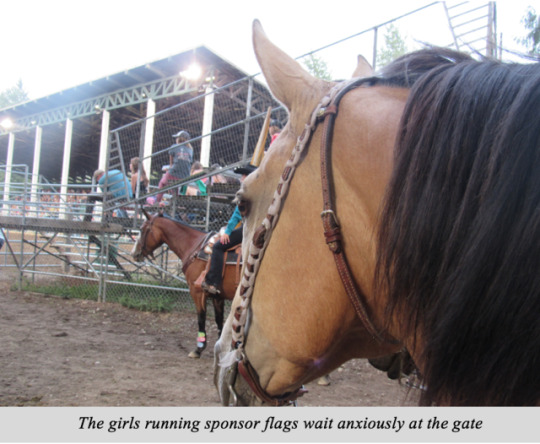



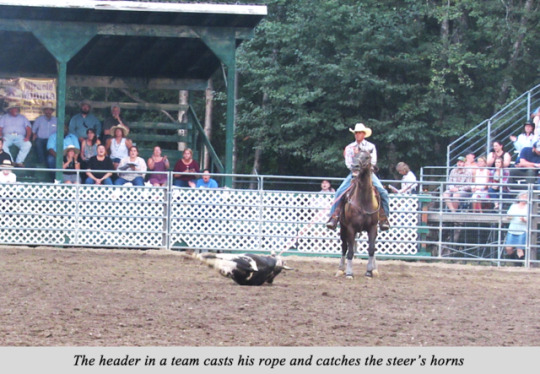

Athletes Face Off at the Challenge of Champions Rodeo in Sandpoint
1 note
·
View note
Text
Journalistic Code of Ethics
The truth is held above all else, and is what should be printed at all times. It does not matter if it paints the journalist in an unfavorable light, or anyone else for that matter. However, blatant libel is not permitted. All accusations must be factual and backed up by substantial evidence.
No information should be censored or altered for comprehension. Direct quotes must be left as they are, and facts should be reported without any information removed or paraphrased. Information should not be altered to cater to the wishes of any particular ideology.
Credit all sources that are known. A substantial amount of research should be put into finding an unknown source before declining to state it. Information should be able to be researched or confirmed by readers and should be obviously stated whenever at all possible.
Treat all people involved in writing and producing a story with respect. This includes people interviewed, victims of a traumatic accident, family members of the victims, and editors.
Be respectful and patient when interviewing someone. Their words will always be the most important, so a journalist should be wise and allow as much time as possible for them to speak and articulate their words.
Never build adverse opinions or judgments on a person before meeting them, or speaking to them extensively, based on gender, race, sexual orientation, age, income, or any other factors that could build a bias. None of these factors should ever be used to discriminate against anyone in any instance.
A journalist should remain impartial unless explicitly stated in the article. Any personal connection that a journalist has with a story should be discussed beforehand. This is another thing that is important to contribute to the integrity of an article.
Welcome information from all sources. Just because a source is not official does not mean that it is not equally important. In addition, actively seek out those who may not have a venue to readily have their voice heard.
It is important to find the subjects of news stories whenever possible. They should be allowed to defend themselves and share their side of the stories and should be given ample opportunity to. All sides of a news story should be considered.
One’s own opinions should not be included in an article unless it is an opinion editorial or specifically calls for the opinion of the journalist. Every publication should remain unbiased and written entirely by truth.
Nothing should be published out of malice at any one individual. Factual information about their misdeeds may be reported, but no one should grasp at threads to publish anything in an act of revenge.
Actively seek out and publish the unethical proceedings of corporations, politicians, and other persons or companies with power over the public. Expose them for negligent and corrupt behavior.
Be especially careful when publishing the names of minors. Children deserve their privacy and it should be protected for as long as possible, especially if they are very young. This also applies to the victims of sex-related crimes.
Write now. Ask for permission later. Some of the most important articles were written without or against the consent of publishers or the government. A quality article should speak for itself.
Do not allow captions, headlines, graphics, videos, or anything else to misrepresent the article in order to increase the readership of a certain article. This also goes along with only printing factual and honest material.
0 notes
Text
In Remembrance of Those Lost: The AIDS Crisis
Thirty-five years ago, on September 24th, one of the most devastating illnesses in our history was given its name. September 24th, 2017, marked the thirty-fifth anniversary since AIDS, or Acquired Immune Deficiency Syndrome, was officially named by the CDC in 1982.
Sharon McDonald, a freelance writer and copy-editor, remembers what the social and political climate was like at the time of the crisis.
“From the late fifties through the seventies, multiple communities became politically active, fighting for the rights of women, Hispanics, union workers, black people, disabled people, and even old people. The movements inspired each other, and it was a phenomenal time of people developing a political identity within their demographic.”
AIDS, although it could be contracted by anyone, made its way around the gay community at a shockingly rapid pace.
“Gay people started political work as a group in the early seventies. It was shocking to the mainstream, since gays had been kept in the closet by fear and shame,” McDonald said. She remembers the urgency of the disease well.
“A friend of mine started feeling bad during Thanksgiving dinner with his family. He was dead before New Year’s. The rapidity of decline, the virulent fatality of it, and the utter mystery of what was happening was terrifying.”
Many of McDonald’s friends were affected or killed by the condition, and she distinctly remembers the community of people that supported the victims and survivors, and it certainly wasn’t the general population.
“Gay men were as sexist as straight men, surprise surprise! And gay women were as suddenly passionately feminist as straight women, surprise surprise. But gay people came together over AIDS. For one thing, within a matter of months – like two or three months – gay men were dying in droves, preachers were condemning gay people even more viciously than usual, and the gay men who weren’t sick were exhausting themselves taking care of the sick, and also debilitated by fear for their own health. Gay women saw this close up, because these guys were our friends— half our friends were dying horrible deaths! Out of nowhere! So yes, gay women, including me, did step up, did tend to the sick, did sit with the dying, did cry with the survivors, and did cry again when the survivors became sick.”
She spoke about how life was a time of fluctuating hope and misery, no one ever really resting.
“Every time the researchers learned a new detail, our hope spiked that we might be able to save some of our friends,” McDonald said.
“A mother or father who had disowned their gay child often flew to their side and loved the hell out of them throughout their passing. There were also parents who couldn’t bring themselves to come, and suffered the death of their child at a remote and guilty distance. And they did suffer, the guilt invaded them as much as the grief. Many families were brought together, though.”
Today, some people, primarily heterosexual people, still see AIDS as a condition that can only touch gay people, especially gay men. When asked her opinion on this assumption, McDonald said: “I think it may be for some straight white people, but it’s definitely not seen as a solely gay disease by African Americans. AIDS has run like wildfire through the black community, both gay and straight. Also, many black pastors preach that homosexuality is a perversion and a sin, which makes it harder to come out and seek help in the earlier stages of the disease. Everything I say has its exceptions, though. I did a magazine feature back in the eighties on a black preacher who formed a church specifically to minister to people with AIDS and the church grew and grew.”
As with every horrible event in history, AIDS brought some small, torn bits of silver lining. However, it also brought forth large amounts of metaphorical ugly, black, lethal fog that enveloped everyone. McDonald reflects on both of these things.
“The bad? That’s easy! It killed my friends! The good? Well, I saw a lot of people, both the sick and the well, stripped down to their core, who then reached out in love to their loved ones and also to strangers. Parents whose sons died, who then stayed and nursed gay men who were strangers to them. People whose priorities radically shifted, whose values deepened. But at an obscenely high price.”
Overall, AIDS is perhaps no longer remembered as the overwhelming crisis that it was. It devastated families, communities, and wiped out an entire generation of gay and bisexual men. It will forever be imprinted in the minds of survivors and of people who lost their friends and family members.
“Two words sum up that time for me,” McDonald said. “Grief and fear.”
1 note
·
View note
Text
Fundraiser to be Held by 4H National Horse Teams
The Idaho 4H horse teams are holding a fundraiser at Farragut State Park in Bayview, Idaho, on October 7th. The teams are facing an incredible opportunity that they have worked extremely hard to earn. On October 13th, they will be on a plane to Ohio, and two weeks after that, on a plane to Kentucky. Before this happens, however, they must earn the money to cover the expenses of the two trips. To do so, the teams are holding a fundraiser at Farragut state park in Bayview, Idaho, on October 7th.
“I’m definitely excited to go,” says Kaitlyn Cummings, a member of all three of the teams eligible for national competition. “I think that this fundraiser will be a success.”
The fundraiser will be a poker ride, and it will welcome riders of all ages to attend, with youth winning their own awards at the door instead of collecting poker hands.
Up to this point, the teams have been raising money through bake sales and sponsorships. They must earn upwards of eight thousand dollars to pay for the expenses incurred with plane tickets and hotel rooms, not to mention meals.
“I’m feeling positive that we will make enough money to be able to go.” Cummings said. “We have been working really hard, and I am confident that it will pay off.”
The teams have been practicing for months now, after placing first at state in Horse Judging and third in both Hippology and Horse Bowl. They meet every week to discuss questions and judge some of the thirty plus horses that they have available to them.
When asked how she thinks that this trip will compare to previous nationals’ trips, Cummings said, “I think that it will be great. The best yet.”
1 note
·
View note
Text
About Me
Hi! My name is Mattye.
I consider myself a writer, and I enjoy to write pretty much anything, however, fiction is my favorite. I enjoy writing horror stories, stories that explore unconventional themes, and stories involving universes that replicate our own but are slightly shifted three inches to the left. I like to read, yet again, pretty much anything. My favorite books are The Picture of Dorian Gray by Oscar Wilde, Grey by Pete Wentz, Falsettos by William Finn and most anything by Edger Allen Poe. I am currently reading And the Band Played On: Politics, People, and the AIDS Epidemic by Randy Shilts as well as Borrowed Time by Paul Monette. I highly recommend both of them, as they are a heart-wrenching look into a horrible part of our history.
My favorite movies include Velvet Goldmine (1998) and the professionally recorded version of the 2016 revival of Falsettos. I also like The Curiosity of Chance (2006).
My favorite websites that I use for getting information and reading news are The New York Times, and the Washington Post. Websites that I like to browse for entertainment are Tumblr and eBay, especially now that I am compiling Halloween costumes for my horse and I.
If I was going to introduce myself in a video, I would most likely be riding one of my horses, as I do know that there are several videos of that floating around. Outside of school, I enjoy writing, reading, riding my horses, and, on rare occasions, sleeping. I’m a theatre kid but I can’t act or sing so I’m learning about tech and props. My favorite musicals are Falsettos, In Trousers, Something Rotten!, Bare: A Rock Musical, and American Idiot.
One interesting piece of information that I have learned so far about the history and development of journalism in the United States is that at first it was opposed by some vehemently, and was seen as out to corrupt all of the people that read it. It reminds me of how some of the older generation today feel about electronics- what’s that saying about history repeating itself?
I am taking Journalism 101 because I love to write and I have never dabbled in journalism as much as I would have liked to. For this reason, I decided to take it as an elective to learn some new things and improve my writing skills. It looks like it will be a fun class and I will learn a lot.
Although, perhaps, I can best be summed up in this synopsis that came to be after I published a short story with Harmony Ink Press:
“Mattye, or “pathetic mime” if you are talking to her mother at any point after that one time she got laryngitis, spends most of her time either writing or attempting to convince large animals not to kill her. Those animals being horses. She’s fifteen, and the most recent dumb thing she did was put a chip bag in the microwave to shrink it. Her mother was in complete support of this, and the microwave miraculously survived.”
0 notes
Text
Do’s and Don’ts of Maintaining Your Online Reputation
DO: Use a nickname, pseudonym, or just your first name on your blog
DO: Be aware of what turns up when you search your own name
DO: Refrain from posting things that you wouldn’t want an employer to see
DO: Remember that everything you post on the Internet will be there forever
DO: Build a positive online presence on a website such as LinkedIn and keep it updated
DO: Untag yourself from photos that friends have tagged you in that you don’t want to be associated with you or, better yet, ask them to delete the photos
DON’T: Post your address or phone number
DON’T: Post photos of yourself drinking underage, smoking, or doing drugs
DON’T: Send sexually suggestive or nude photos to anyone
DON’T: Use your full name on your blog or any other online presence except for positive and updated places such as LinkedIn
DON’T: Comment things that you wouldn’t want your employer to see
DON’T: Reveal any illegal behavior on the Internet that you have engaged in
DON’T: Post anything that a friend, partner, or anyone else has expressed that they would be uncomfortable with being on the Internet
0 notes
Photo





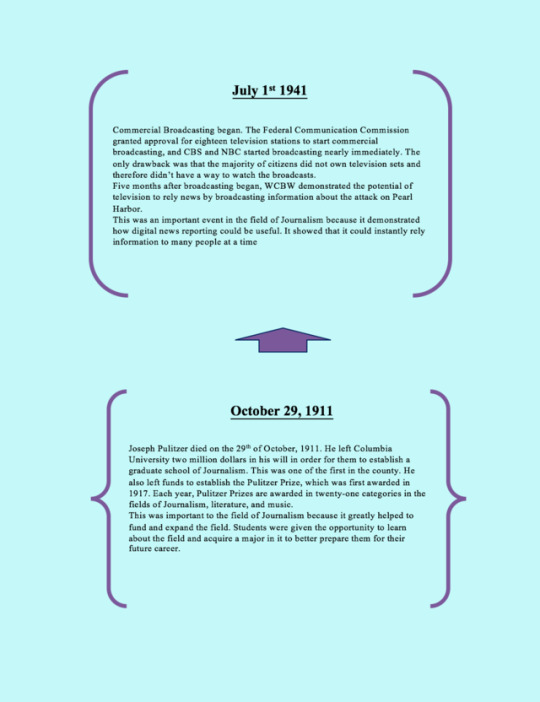
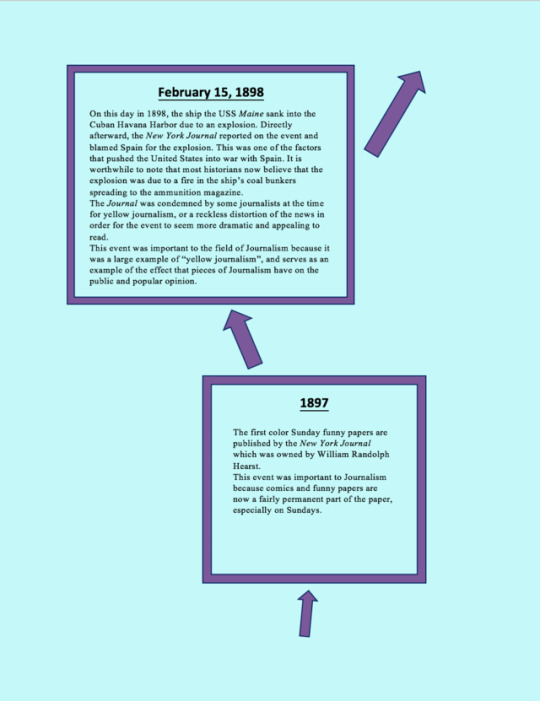

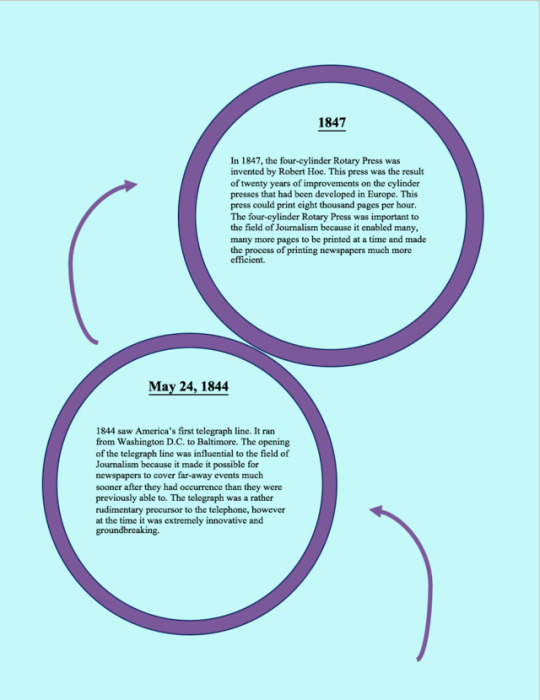

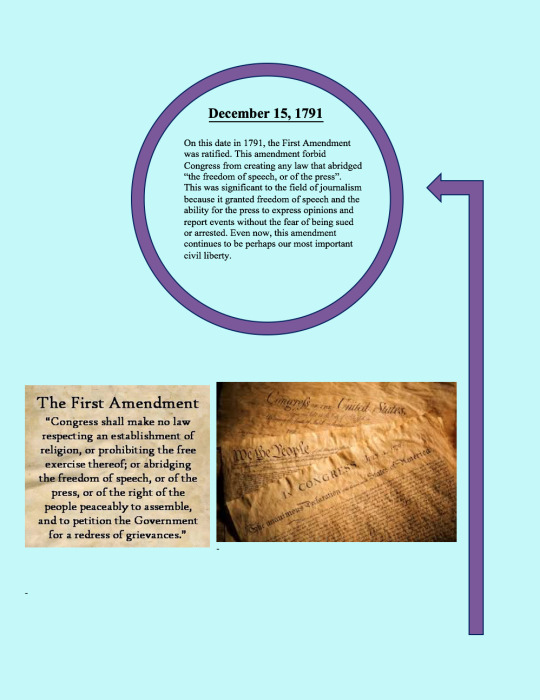



A brief timeline of the history of Journalism- From carved into stone to typed onto the digital canvas of the Internet
0 notes
Text
Jeff Schmalz- An Inspiration in the Face of a Crisis
It takes a special kind of bravery to report and research a disease as you are actively dying of it. Jeffery “Jeff” Schmalz possessed this bravery. Schmalz was a New York Times reporter who wrote political articles until the rise of the AIDS crisis.
AIDS, an acronym for Acquired Immune Deficiency Syndrome, first appeared in 1981 and displayed symptoms of a type of rare lung infection. It was given the name AIDS by the CDC on September 24th of 1982, and went on to devastate many families and communities. AIDS begins as HIV, or Human Immunodeficiency Virus, and is incurable. At the time, there was no way to put the virus at bay before it could progress to AIDS.
Needless to say, this disease swept through the United States, although perhaps San Francisco and surrounding areas were hardest hit, and journalists were at the forefront providing the latest news, updates, and obituaries. One of these journalists was Jeff Schmalz. Before the crisis struck, Schmalz remained closeted from the newsroom management which included homophobic executive editor Abe Rosenthal.
The town of Willow Grove, Pennsylvania served as the town where Schmalz was born and raised. He grew up with his mother and his sister Wendy Wilde past the age of two, as his parents divorced. His father, an alcoholic, died when Schmalz was just a teenager, which prompted him to qualify for a fatherless son scholarship which allowed him to attend Columbia University in 1971.
Interestingly enough, Schmalz studied economics and considered attending law school before he eventually began working at the New York Times at age eighteen as a copyboy. He grew to love this job, and after he was promoted to the position of copy editor he dropped out of Columbia to work at the Times as a full-time job.
Schmalz became part of the national staff in 1988, and there he worked as bureau chief in Miami. Two years later, he returned to New York as deputy national editor. To preserve his position, Schmalz remained closeted from most of his superiors. In the ‘70s and ‘80s, coming out as gay at the Times resulted in at least some sort of punishment or setback. This occurred to Schmalz in 1983, after he was diagnosed with AIDS and his secret was out. He was passed over for an important promotion and instead was given an entry-level reporting job that he had accumulated far too much experience to logically do. However, Schmalz did come out to his colleagues and those below him, including journalist Samuel G. Freedman. As he wrote in his article “The Man Who Transformed How The New York Times Covers the Gay Community”, “Jeff gave me a field assignment. I would cover the Gay Pride Parade. I understood his agenda right away. Already in my brief time on the Times, Jeff had told me he was gay, the first person in my life to make such an admission. Somehow, in spite of my overall ignorance, he’d sized me up as someone capable of being sensitized to the reality of gay existence and of doing some small part to personally improve the Times’ coverage of it.”
On December 21st, 1990, Schmalz experienced a grand mal seizure while sitting at his desk and editing an article. His left eye had been twitching for weeks, and he had been experiencing vision problems. Accounting it to stress, he took ten days off and went to St. Thomas in the Virgin Islands to relax and hopefully cure his eye twitching. The twitching didn’t stop, and shortly after he returned to work he had the seizure. Many people from the newsroom rushed to his side, and Dr. Lawrence Altman was called from the science desk to assist the situation.
A month later, Schmalz tested HIV-positive. His body had already been destroyed by the virus, and his T Cell count measured just two. At first, it was believed that he could be affected by toxoplasmosis, which is a deadly brain infection. A spinal tap showed no instance of this infection, and the doctors decided that they wanted to perform exploratory brain surgery. It turned out that he had a fatal brain disease known as Progressive Multifocal Leukoencephalopathy. This is when he informed the paper of his condition, as he himself said, “I just went in and told them that I had AIDS.” He had a warm friendship with Max Frankel, and he said that “Max cried. Lelyveld cried. They were just so deeply and genuinely moved. They told me that the Times would do anything it could. Historically, the Times has always rallied around employees who are sick and has always treated people exceptionally well, including people with AIDS.”
Shockingly, Schmalz responded well to Azidothymidine, also known as AZT, and became healthy enough to return to work by 1992. He began by covering the 1992 presidential election and eventually began to report on AIDS. In his article “The Prism of AIDS”, published in December of 1992, he wrote, “Now I see the world through the prism of AIDS… I feel an obligation to those with AIDS to write about it and an obligation to the newspaper to write what just about no other reporter in America can cover in quite the same way.”
When Schmalz interviewed people affected by AIDS, he informed them that he had it as well. “To be sure, that is an interview ploy; I'm hoping the camaraderie will open them up,” he wrote. “But there is more to it than that: I want them to take a good look at me, to see that someone with full blown AIDS can carry on for a while, can even function as a reporter. Much of the time, it works. Their faces light up. There is hope.”
In his last three years of life, Schmalz pressed the Times to change the way that they covered members of the LGBT community and, most specifically, gay people. As Freedman wrote, “Jeff burned for the Times to cover gay people and issues in a way that wasn’t exotic or judgmental, and he knew the newsroom politics well enough to recognize that such change would not happen easily. Young, straight, sympathetic reporters like me were Jeff’s stealthy emissaries.” He also wrote about how the Times forbid the use of the word “gay” in all instances except as part of direct quotes.
Near the end of his life, Schmalz utilized dark humor to describe his condition. When his declining T Cell count reached the single digits, he joked about naming them. He used his disease as a tool to bring attention to it and to put a human face to it, instead of just lines of words covering pages that describe the deaths of thousands upon thousands of multifaceted people, many in the prime of their lives. “I have a voice that needs to get out now,” he said, “AIDS is not just a disease. It is a revolution in your life.”
On November 6th, 1993, Jeffery Schmalz died at the age of thirty-nine in his home where he resided in Manhattan. He leaves behind the legacy of promoting tolerance and acceptance in the New York Times, and providing a voice to those who suffered alone during the crisis. He was a major journalist and was at the face of the crisis via journalism.
In December of 1992, in a personal article, he wrote, “To have AIDS is to be alone, no matter the number of friends and family members around.”
Citations:
Frankel, Mark. "When Gay Journalists Were Closeted: A History of AIDS Coverage at 'The Times'." Columbia News. Columbia News, 23 Dec. 2015. Web. 11 Sept. 2017.
http://news.columbia.edu/content/when-gay-journalists-were-closeted-history-aids-coverage-times
Freedman, Samuel G. "The Man Who Transformed How The New York Times Covers the Gay Community." Columbia Journalism Review. Columbia Journalism Review, 30 Nov. 2015. Web. 11 Sept. 2017.
https://www.cjr.org/the_profile/jeff_schmalz_sam_freedman_new_york_times.php
Martin, Justin. "Remembering Jeff Schmalz, Who Reported On AIDS While He Fought The Disease." KERA News. KERA News, 30 Nov. 2015. Web. 11 Sept. 2017.
http://keranews.org/post/remembering-jeff-schmalz-who-reported-aids-while-he-fought-disease
Meislin, Richard J. "Jeffrey Schmalz, 39, Times Writer On Politics and Then AIDS, Dies." The New York Times. The New York Times, 06 Nov. 1993. Web. 11 Sept. 2017.
http://www.nytimes.com/1993/11/07/obituaries/jeffrey-schmalz-39-times-writer-on-politics-and-then-aids-dies.html
Signorile, Michelangelo. "Out At The New York Times: Gays, Lesbians, AIDS And Homophobia Inside America's Paper Of Record." The Huffington Post. TheHuffingtonPost.com, 28 Nov. 2012. Web. 11 Sept. 2017.
http://www.huffingtonpost.com/2012/11/28/new-york-times-gays-lesbians-aids-homophobia_n_2200684.html
WNYC. "Dying Words: The AIDS Reporting of Jeffrey Schmalz." WNYC. WNYC, 14 June 2017. Web. 11 Sept. 2017.
http://www.wnyc.org/story/dying-words-aids-reporting-jeffrey-schmalz/
0 notes
